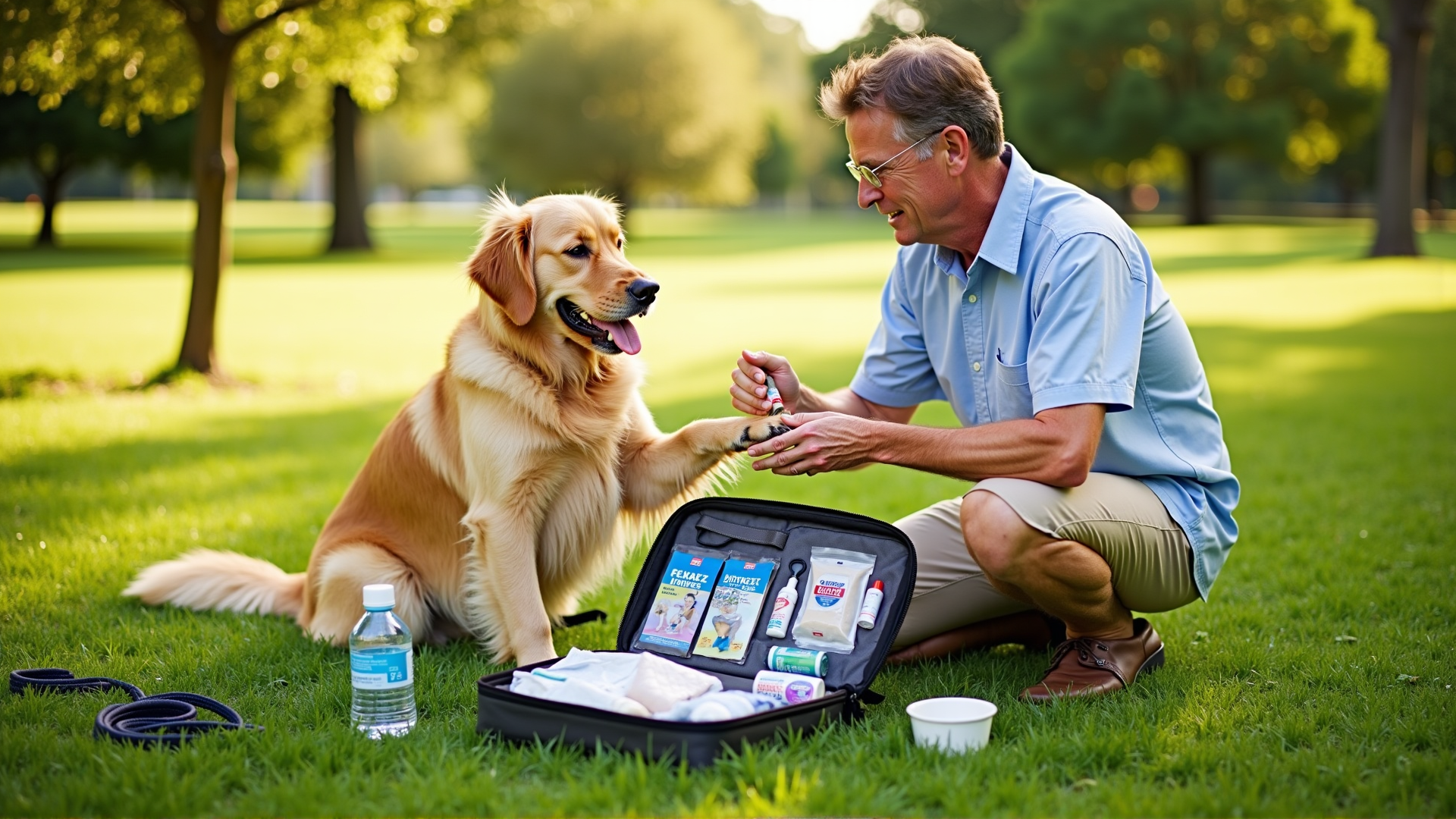In an emergency involving your pet, immediate and knowledgeable action can make all the difference. Understanding basic first aid techniques can help stabilize your pet until you can reach a veterinarian. Here's how you can prepare yourself for unexpected situations and provide effective first aid for your furry friends.
Preparing Your First Aid Kit
A comprehensive first aid kit tailored for pets is the foundation of effective emergency care. This kit should include:
- Bandages: Non-stick dressings and bandage tape to cover wounds.
- Antiseptic wipes: Use these to clean minor wounds or abrasions.
- Tweezers: For removing small foreign objects or splinters.
- Digital Thermometer: Essential for monitoring your pet's temperature.
- Hydrogen Peroxide: Can be used to induce vomiting under a vet's guidance.
- Cotton Balls and Emergency Blanket: Useful for cleaning and providing warmth.
- Pet-Specific Items: Include any prescribed medications and a muzzle, as injured pets might bite out of fear or pain.
Assessing the Situation
The first step in any emergency is to calmly assess your pet’s condition. Look for signs of distress such as difficulty breathing, severe bleeding, or unconsciousness. Avoid panicking, as your pet may pick up on your stress and become more anxious.
Performing First Aid
-
Bleeding: Apply direct pressure to the wound with a clean cloth or bandage. Elevate the injured area above the heart level if possible, and seek veterinary care immediately if bleeding is severe or does not stop.
-
Choking: If your pet is choking, use a flashlight to see if the object is visible in their mouth. If you can see it and it's safe to do so, try to remove it gently with tweezers. If not, attempt the Heimlich maneuver specifically designed for pets, or take them to a vet without delay.
-
Fractures: Keep your pet as still as possible and gently support the injured area. Avoid trying to set the fracture yourself. Use a blanket or board as a stretcher to transport your pet to the vet.
-
Heatstroke: Move your pet to a cooler place immediately. Apply cool (not cold) water to their fur and skin and offer water to drink. Monitor their temperature, and transport them to the vet as soon as you can.
-
Seizures: Keep your pet away from harm or anything that might cause injury during a seizure. Do not attempt to restrain them. Once the seizure stops, keep them calm and quiet, and contact a veterinarian.
Post-Care and Transport
After administering first aid, it's crucial to visit a veterinarian for a thorough examination. When transporting your pet, ensure that they are secure and comfortable to prevent further injury. Use gentle handling methods and try to minimize their stress.
Educate Yourself
Taking a pet first aid course can significantly enhance your knowledge and confidence in dealing with emergencies. Such training can provide you with hands-on experience and a deeper understanding of pet anatomy, which can be invaluable in critical situations.
Regular Health Checks
While first aid is essential, routine preventive care and regular visits to the veterinarian remain the best strategy to keep your pet healthy. Regular check-ups can help identify potential health issues before they escalate into emergencies.
Final Thoughts
Preparedness can save a pet’s life. By building a well-equipped first aid kit, acquainting yourself with crucial techniques, and seeking prompt veterinary assistance, you can provide the best possible care for your pet when they need it the most. This knowledge not only empowers you as a pet owner but also ensures peace of mind, knowing you can handle emergencies effectively.
